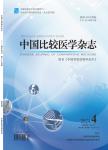Xenobiotic effects in cancer related pathways-high throughput screening and proof of concept in animal models
Xenobiotic effects in cancer related pathways-high throughput screening and proof of concept in animal models作者机构:Suzhou Xishan Zhongke Drug Research & Development Co. Ltd. 1336 Wuzhong AvenueSuzhou 215104JiangsuChina
出 版 物:《中国比较医学杂志》 (Chinese Journal of Comparative Medicine)
年 卷 期:2013年第23卷第1期
页 面:69-80页
学科分类:1001[医学-基础医学(可授医学、理学学位)] 10[医学]
摘 要:Xenobiotic drugs and chemicals directly interact with DNA,proteins,or other biomolecules in cells. These direct interactions with molecular targets may trigger a series of downstream effects on metabolic-biochemical and regulatory-signaling networks that can invoke cellular consequences leading to adaptive homeostatic or adverse pathological responses. Regulators for drug and chemicals safety have therefore since long required the testing of toxicity in animal models before drugs and pesticides can enter the market. The US National Research Council of the National Academy of Sciences,in its report,Toxicity Testing in the 21st Century: a Vision and a Strategy [1] ,proposed that toxicity testing should become less reliant on apical endpoints from whole animal tests and eventually rely instead on quantitative,doseresponse models based on information from in vitro assays and in vivo biomarkers,which can be used to screen large numbers of chemicals. The present paper reports about a combination of HTS in vitro assays that can be used to study the potential tumorigenic effect of xenobiotics ( drug targets,environmental chemicals) via a set ofsentinelgenes [2] that are functionally interrelated based on evidence weighted functional linkage network ( FLN ) log-likelihood scores ( Linghu et al [3] ) .



